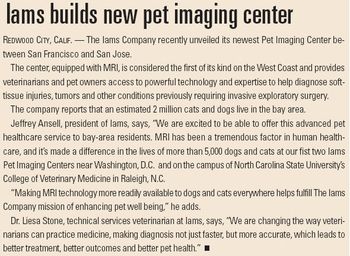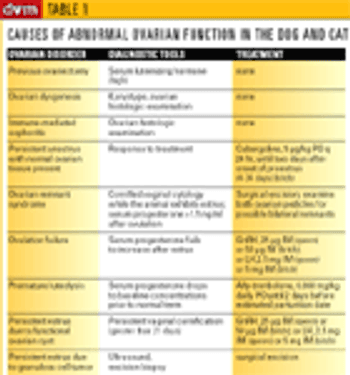
Please review influenza in animals
Dr. Johnny Hoskins is owner of DocuTech Services. He is a diplomate of the American College of Veterinary Internal Medicine and he is a member of DVM Newsmagazine's Editorial Advisory Board.

Please review influenza in animals

Determining the right category of cough relies on clinical signs and diagnostic findings.

Q Please review laboratory diagnosis of systemic mycoses and toxoplasmosis.

Q. Please review bartonellosis in animals and humans.

Infections occur infrequently, but can be months after the implantation, from hematogenous spread.

Canine rickettsial infections are important causes of morbidity and mortality worldwide.

The fourth goal of therapy is to prevent serious side effects of immune-mediated hemolytic anemia.

There are no efficacy studies yet available to indicate the value of tramadol for treating pain in animals.

Could you review trends in feline urolithiasis in cats?

Q Please review inhalant therapy in dogs and cats.

Severe cases generally require both medical and surgical management.

Dr. Bonnie K. Lefbom at the 2005 American College of Veterinary Internal Medicine Forum in Baltimore gave a lecture on sildenafil and novel cardiovascular therapies.

Please review heat-illness problems in dogs.

Dr. Mark G. Papich at the 2005 American College of Veterinary Medical Internal Medicine Forum (ACVIM) in Baltimore gave a lecture on the safety and efficacy of compounded drugs.

Please review inappropriate urination/cystitis in cats.

Reduction in appetite indicates that the induction phase of therapy has been completed.

Optimal medical care should include measuring BUN, serum creatinine and serum electrolytes daily.

Canine hemangiosarcoma (HSA) is an incurable tumor of vascular endothelial cells. HSA accounts for 7 percent of all cancers; thus, of the 65 million pet dogs living in the United States today, between 1.5 million and 2.5 million could get HSA and succumb to it. Although dogs of any age and breed are susceptible to HSA, it occurs more commonly in dogs beyond middle age and in breeds such as Golden Retrievers, German Shepherds, Portuguese Water Dogs and Skye Terriers. The estimated life-time risk of HSA in Golden Retrievers is one in five, illustrating the magnitude of this problem.

Q. Please review urinary incontinence in dogs.

Pathologic processes, such as inflammatory mass and neoplasia, share some MRI characteristics as well as similarities in origin, shape or anatomic site.

Diet modifications, antibiotic treatment, and specific antiinflammatories and immunosuppressives can treat IBD.

Dr. Deborah Silverstein at the 2005 American College of Veterinary Internal Medicine Forum in Baltimore gave a lecture on shock fluid therapy. Some relevant points in this lecture are provided below.

Q: Please review diagnosis and management of feline uveitis.

Antimicrobial selection should strive for a spectrum that is as narrow as possible, thus avoiding the sequelae of drug use on the normal flora and unnecessary selection pressure.

Last month, Dr. Brenda Griffin gave a lecture on small animal spay/neuter programs at the 2005 American College of Veterinary Internal Medicine Forum in Baltimore. Some relevant points in this lecture are provided in this column.

Waiting until the dog is settled and quiet is perhaps the most practical way to achieve quiet.

Illness in young puppies usually commences between the 5th and 18th days after birth.

Chamber dilatation results in secondary atrioventricular valvular regurgitation.

In some cases, a definitive diagnosis can be established only by synovial membrane biopsy.

Please review normal and abnormal ovarian function in the dog and cat.